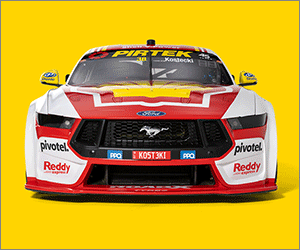If there’s one thing Australian new car buyers will never get sick of it’s value.
Sure, we buy a lot of premium cars, but everybody loves a good deal. Which is something Mazda has learnt after taking its big gamble to move more upmarket with its six-cylinder and hybrid-powered CX-60 range.
It was meant to herald the start of a new era for Mazda, pushing it to the edge of the premium car market and pinch sales from the likes of BMW and Mercedes-Benz. Unfortunately, it hasn’t worked out like that, with the brand forced to overhaul the ride and handling package after significant criticism.

The brand also looked at ways to extend the reach and grow sales, which primarily meant the addition of a new, more affordable specification. So the Pure trim level was introduced with the updated CX-60 range earlier this year, which was designed to make it even more price competitive across all engine options.
Now Mazda is trying to expand the appeal of the CX-60 even further by relying on arguably its most popular engine – the Skyactiv-G 2.5-litre four-cylinder petrol unit.
This has allowed Mazda to introduce a trio of more affordable, and hopefully, more appealing CX-60m variants – the G25 Pure, G25 Evolve and G25 Touring. The G25 Pure starts from just $44,240, which is $6,000 less than the cheapest six-cylinder CX-60, while also putting it into more direct conflict with the CX-5.

Mazda admits this isn’t ideal, and it was clearly one of the reasons why it chose not to offer the 2.5-litre engine initially, but with the CX-5 ageing and set to be replaced in 2026 the time is right to simply maximise sales.
It’s worth noting here that Mazda has not abandoned its premium CX-60 aspirations, with the six-cylinder and plug-in hybrid variants still available in GT and Azami grades and stretching all the way to more than $80,000.
But the G25 is clearly designed to grow sales. Before a single example has been sold Mazda is predicting the new G25 will attract 34 per cent of sales, which would make it the most popular member of the CX-60 family.

And it’s not hard to see why. The G25 2.5-litre four-cylinder petrol engine makes a modest 138kW of power and 250Nm of torque, but it feels better on the road than those stats suggest. Especially as the G25 is only available with rear-wheel drive, so it has a more dynamic driving experience than you typically find in an SUV.
Mazda has always pushed the dynamic ability of its cars, even its SUVs with its ‘zoom-zoom’ mantra and while the CX-60 remains a work-in-progress, the latest iteration is a big step forward in terms of ride and handling than the original.
Unfortunately the example we tested did have some noticeable stuttering within the transmission at low speeds, but overall the driving experience is enjoyable.
As for the practical nature of the CX-60, obviously it is slightly larger than the CX-5 but it remains a five-seater and lacks anything that really helps it stand out from both its stablemate and its competitive set.

This is arguably the area where Mazda has been the most conservative with the CX-60, opting for a sensible and evolutionary interior design rather than really pushing the envelope of design and creativity. While externally it certainly has potential as a semi-premium offering that could woo potential BMW and Mercedes buyers, inside it feels very mainstream.
Especially so in the G25 Pure, which uses noticeably cheaper plastics and trim options to keep the cost down. And while you can arguably get more value, in terms of interior ‘wow factor’, from other brands, few have the reputation of dependability that Mazda has; so that shifts the value equation again.
While it has its flaws, the CX-60 G25 also has plenty of appealing aspects too. For those looking for something that combines both a premium touch and an affordable price, it ticks the boxes. Mazda will be hoping that there is plenty of interest in this better value proposition to turn around the fortunes of the CX-60.















Discussion about this post